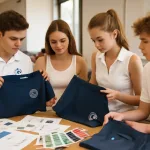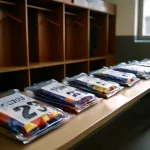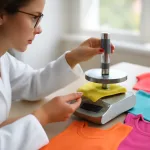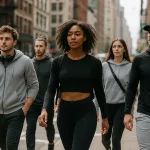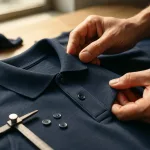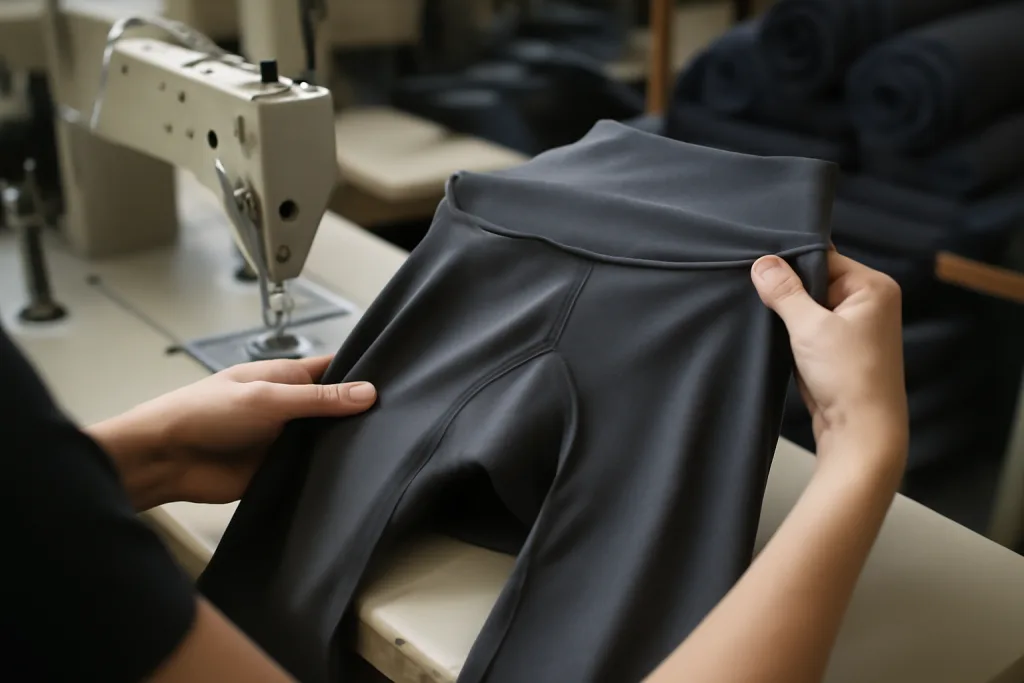Defining Squat-Proof: Why Opacity Matters

“Squat-proof” means leggings stay opaque even when stretched during movements like squats or lunges. This is vital for both modesty and athletic confidence. See-through fabrics not only distract wearers, but also reflect poorly on brand quality. Opacity is measured by controlled tests that mimic real-life activities, with strict standards governing acceptable transparency.
Opacity Testing: Methods and Metrics
At the factory level, opacity standards start with bench tests. The Stretch Opacity Test stretches fabric swatches to 150–200% of original length, evaluating visibility under strong light. Lab teams also use standardized scales such as the ASTM D6544, where a rating below 4 on a 5-point scale may indicate transparency issues. For full-garment testing, leggings are fitted to mannequins and checked using powerful overhead lights — simulating both natural daylight and studio lighting conditions.
Squat and Motion Tests
Real wearers perform deep squats, lunges, and splits while observers check for any hint of skin or undergarment visibility. Brands often request video documentation and side-by-side photography to compare multiple fabric options before finalizing bulk orders. Only leggings passing both lab and wearer tests move forward to production.
Opacity Standards in Manufacturing
- Leggings must score ≥4 (out of 5) on stretch opacity indices.
- Swatch and mannequin stretch tests used prior to bulk approval.
- Inline QC checks ensure batch consistency across all sizes.
Choose Fabrics: Blends & GSM for Squat-Proof Performance
The secret to squat-proof leggings starts with the fabric blend. Most premium leggings use blends of polyester and elastane (spandex) for four-way stretch, recovery, and opacity. For sustainable variants, manufacturers like Ninghow incorporate recycled polyester (rPET), which meets environmental targets without sacrificing strength or performance.
Fabric Recipes for Peak Opacity
| Blend | GSM | Squat-Proof Rating | Best-Use Scenario |
|---|---|---|---|
| Polyester (75%) + Elastane (25%) | 220–260 | Excellent | Yoga, active workouts |
| Recycled Polyester (70%) + Elastane (30%) | 230–250 | Very Good | Sustainable programs |
| Nylon (80%) + Spandex (20%) | 210–240 | Good | Running, HIIT |
| Modal (60%) + Nylon (35%) + Elastane (5%) | 220–240 | Good | Lifestyle leggings |
GSM Explained
GSM, or grams per square meter, measures fabric weight. Heavier GSM leggings (220–260) typically prevent see-through, especially when paired with high-quality elastane. However, excessive thickness can reduce breathability or stretch, so balance is essential.
Lab Dips, Strike-Offs & Bulk Shade Approval
Consistency matters. Brands rely on lab dip and strike-off samples to control color and opacity prior to bulk production. Shade bands help maintain color accuracy across sizes and batches, especially for black leggings, which show opacity flaws most easily.
Waistband Engineering: Hold & Coverage
A secure, opaque waistband transforms comfort and silhouette. Ninghow’s engineering uses wide waistbands (8–12 cm), often double-layered or reinforced with mesh, to prevent rolling and maintain coverage even under high stretch.
Waistband Types
- Double-layer flat waistbands: Improved squat-proof coverage and secure fit.
- Contoured shaping bands: Enhanced support for movement.
- Hidden elastic reinforcement: Prevents twisting, bunching, or transparency.
Seam Engineering
Coverstitch seams (ISO 406), bartacks at stress points, and smooth overlocked finishes add durability. This prevents seam puckering and stretch gaps, which can lead to transparency over time.
Gussets & Crotch Structure
Gusset inserts — diamond or triangle-shaped fabric sewn into the crotch — are industry-standard for yoga leggings. Gussets reduce seam stress, prevent abrasion, and add opacity where coverage matters most. Correct gusset sizing also improves range of motion and long-term comfort.
How Manufacturers Engineer Gussets
- Create graded size sets with crotch gusset markers in tech packs.
- Use the same high-opacity fabric as the main leggings body.
- Employ double-needle or ISO 504 coverstitch for durable join.
Brands often request reinforced gusset sections to pass pilling and abrasion tests, especially for high-impact sport variants.
Pilling & Abrasion Resistance
Leggings that pill or abrade quickly lose their fresh look — and may become see-through as fibers break down. Ninghow’s protocol includes lab tests like ISO 12945 (pilling) and Martindale abrasion resistance. Most top-tier leggings can withstand ≥5000 cycles, maintaining both surface and opacity.
How Abrasion Testing Works
Round pads rub against fabric swatches under controlled pressure, mimicking months of wear. Results must meet strict brand benchmarks.
Preventative Measures
- Blending longer-staple fibers reduces pilling.
- Applying anti-abrasion finishes during fabrication.
- Strict inline quality checks at each sewing stage.
Sustainable Squat-Proof Leggings: The rPET Advantage
Sustainability drives innovation in activewear. Recycled polyester (rPET), derived from post-consumer bottles, offers similar strength and opacity to virgin polyester, with a lower environmental footprint. Brands partnering with Ninghow can opt for GRS-certified or OEKO-TEX STANDARD 100 compliant rPET, ensuring traceable and safe materials (source).
rPET Manufacturing Workflow
- Recycled chips are spun into filaments.
- Filaments blended with elastane for stretch.
- Finished fabric undergoes opacity and squat tests before bulk approval.
Other Sustainable Options
- Organic cotton blends for natural comfort.
- Plant-based modal or viscose for lifestyle leggings.
- Recycled nylon for moisture-wicking, squat-proof performance.
Quality Control, Packaging & Compliance
Manufacturing squat-proof leggings demands tight quality controls. Inline and endline checks monitor fabric stretch, color stability, seam strength, and sizing. Measurement tables track waist-hip-thigh ratios so fit remains consistent. For B2B partners, Ninghow provides AQL (ANSI/ASQ Z1.4) inspection, lab wash testing (AATCC 135), and needle detection protocols (
source
). Packaging follows global retail norms: folded with care labels (ISO 3758 symbols), marked cartons, and barcoded size ratio packs.
Bulk Production Workflow
- Size sets and samples approved by brand.
- Pilot run with full QC checks.
- Bulk shipment, retail-ready.
Compliance Standards
- OEKO-TEX certification for chemical safety.
- BSCI/WRAP for ethical manufacturing.
- REACH compliance for European markets.
- CPSIA for US consumer safety.
Decoration & Print: Art Without Transparency Issues
Prints and decorations add style, but must not compromise opacity. Water-based screen prints, sublimation (for polyester), or high-stretch heat transfers are preferred. Embroidery, including 3D/puff, is limited to reinforced panels to avoid see-through risks.
Decoration Techniques
- Plastisol screen print for bold color and durability.
- Sublimation for all-over prints (polyester/rPET blends).
- DTF or heat transfer for clean edge detailing.
Managing Print Handfeel vs. Stretch
Manufacturers balance print handfeel and stretch by controlling ink deposit, cure temperature, and print location. This ensures coverage and resilience without restricting movement.
Buyer’s Guide: Squat-Proof Leggings Manufacturer Checklist
Selecting a manufacturer for squat-proof leggings means looking beyond price and style. Brands should focus on factories with proven opacity testing routines, advanced fabric sourcing, expert waistband construction, and sustainability certifications.
Checklist for Your Next Bulk Order
- Ask about fabric blends and GSM ranges (220–260 for yoga leggings).
- Request detailed opacity test results, including stretch and wear trial photos.
- Inspect waistband and gussets for engineering and finish quality.
- Verify pilling, abrasion, and laboratory test credentials (ISO, ASTM, AATCC).
- Confirm sustainable options and compliance certificates.
- Review packaging, labeling, and shipping workflows.
Expert Takeaway: A truly squat-proof yoga legging is engineered from yarn blend to final seam. Every detail — from gusset construction to opacity rating — matters for consumer trust and brand success.
Frequently Asked Questions
What makes leggings squat-proof?
Squat-proof leggings use high-opacity fabrics and strong blends, passing stretch tests to ensure coverage throughout motion.
How do manufacturers test for opacity?
Manufacturers apply stretch opacity lab tests and real-wearer trials under strong lighting to check for any transparency.
Which fabric blends are best for squat-proof yoga leggings?
Blends like polyester/elastane, rPET/elastane, and nylon/spandex in 220–260 GSM offer excellent opacity and stretch.
Do sustainable fabrics affect squat-proof quality?
Modern sustainable blends like rPET provide similar opacity and durability, meeting squat-proof standards for activewear.
How do waistband and gusset engineering enhance squat-proof leggings?
Double-layer waistbands and gusset inserts add support and extra coverage, preventing transparency in high-stretch zones.
What quality and compliance checks are standard for squat-proof leggings?
QC includes stretch, colorfastness, pilling/abrasion, spec checks, and certifications like OEKO-TEX and BSCI/WRAP for safety.
